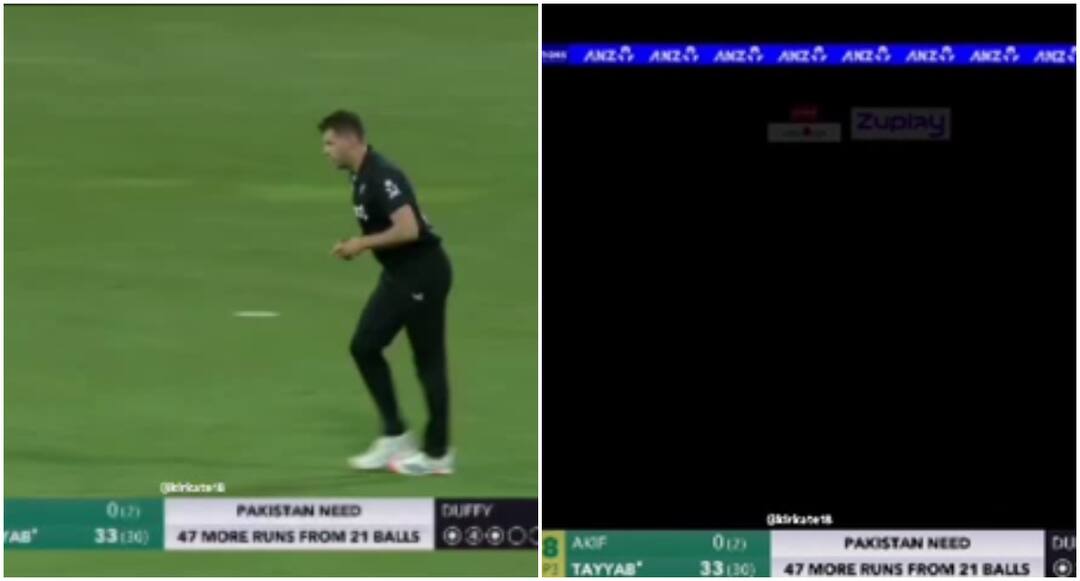Glazed Carlos Alcaraz perfect for the online world but still jarringly human

There’s a Carlos Alcaraz clip on YouTube that has to date been viewed 25m times. The whole thing is a seven-second loop of him catching a ball on his racket at Wimbledon. Currently it also has well over a thousand comments, engaged in a constantly shifting battle for most-liked, most-approved, most gushingly enthused-over.You probably shouldn’t click on it because it is also addictive, a perfect moment of perfect Alcaraz, another endlessly replicating needle-prod of pleasure into your overstimulated brain.But then you will also probably love it because, of all sports, tennis seems the most ideally suited to the online life.This might seem counterintuitive. Tennis is hard, long-form and repetitive. It is also the most intricately difficult sport ever devised, every point just you and no one else, total focus, an impossible blend of physics, athleticism, surfaces, human interaction, returning just a single serve an act of fast-twitch technical perfection, while all you see on television is a ball pinging back and someone going: “Unnngh”.But tennis is also perfect for terminally online fandom because it is so intimate, so intensely theatrical. Internet tennis fans are a unique type: obsessive, touchy, devoted, familial. The relationship with players can feel deeply personal, but also about projection, obsessing over an ankle bracelet, a camera shot, a 40,000-comments-on-Anna-Yankachenko’s-handshake-side-eye dynamic.It is tempting to compare this to the parasocial relationship with celebrities, an endless poring over images of Shiloh Jolie or similar, attaching profoundly personal feelings to a collection of pixels. But in tennis this tends to be relatively kind and gentle. Also, tennis gives you access. The optics invite intimacy. Tennis players are lonely, tender figures, out on their baselines playing a sport that is, by its basic dynamic, a kind of communication, wit, repartee, a single point, like eavesdropping on some intensely intimate conversation.These are also beautiful people, which helps with the obsessive idolatry angle. Their bodies twist and flex in stylised but also very personal ways. Even tennis broadcasting is unusually intimate, to the extent there was a conscious rowing back a few years ago from intrusive closeups of players in the act of serving.View image in fullscreen Carlos Alcaraz’s most surprising defeat in what has been a below-average 2025 was against David Goffin in Miami. Photograph: Leonardo Fernandez/Getty ImagesPlus there is the basic industry dynamic, a sense these people are trapped inside a life, a bubble, available to be pored over and dissected by the unblinking digital eye. Don DeLillo described sport as “the illusion that order is possible”. Tennis creates the illusion of a complete and fully realised world, these lovely, charismatic creatures engaged in the most intricate of sporting dialogues, gossipy and personality-driven, perfect for the six-inch screen, and as such unexpectedly future-proofed in a way very few sports are.At the end of which there is still the question of what it’s doing to the people in the middle. This is why Alcaraz is arguably the most interesting athlete in the world right now, at a significant point in his own arc two weeks before his Netflix film My Way drops, a fact we know because he had the date tattooed on his arm at Indian Wells, and menaced now by some vague sense of personal crisis.There are some obvious reasons why Alcaraz is unique. In many ways his entire career is a kind of existentialist joke. Youngest-ever world No 1. Already earned $40m (£31m). Still only 21. What is he supposed to do? Carry on doing this for ever?He is also the first player to have become great growing up entirely in the hyper-online age. Alcaraz has 6.3 million Instagram followers, but the most notable aspect is the periphery, the endless fan groups and feeds posting Alcaraz content, sometimes just pictures of him pouting or wearing a T-shirt, six-pack stuff, eyebrow closeups, that smile, that haircut, glossing his life into a Bret Easton Ellis novel where everyone is slick and cool and perfectly styled, wearing Prada backpacks, high-fiving Justin Bieber,prepping for a shoot for the book or website of a new male scent called Empty.Alcaraz is currently the spring face of Fantastic Man magazine, looking glazed and slick and machine-handsome. He has just done a Louis Vuitton interview where he says the kind of generic things that sound like they should be voiced by a translator even when they’re being said in English. Oddly, he does all this stuff while seeming jarringly human. A trailer for the documentary shows him back in his childhood bedroom, which is just like a normal bedroom with football boots, Ikea boxes, and also the Wimbledon trophy with his name on it, while he says: “I see myself as a normal person.”Even the crisis stuff is confusing. What has actually happened here? On court there has been a dip before the relentless divvying-up of French Open, Wimbledon and US Open. Such is his talent he can easily spring back into form. The thing that seems to have spooked people is he keeps talking about his feelings. After losing to Jack Draper in Indian Wells, Alcaraz said he had been nervous. After losing to David Goffin in Miami he said: “Mentally, I’m screwed.”This has in turn created a secondary wave of content, because Alcaraz is now a thing that has to happen all the time, more widely searched on Google than the Beatles and Donald Trump, and pretty much neck-and-neck with God.So Alcaraz-in-crisis has been a constant and, it has be to said, weirdly addictive news feed this week. Boris Becker thinks he’s playing too much. Andy Roddick thinks he “needs to be bored” a bit more. Luckily, here comes Tim Henman, who thinks Carlos is not actually in crisis but needs to work on shot selection, a reliably Henman-branded take.Admittedly there was something weirdly shapeless and AI-tinged about some of it. Suddenly Gilles Simon is saying tennis is too brutal, and you start to wonder how much of this content is farm-generated, robots having Alcaraz feelings to feed Big Digital Tennis. How long before 1985 Wimbledon finalist Kevin Curren is saying “this is bullshit”, while Fred Perry speaks out on how Alison Hammond shocked the world with her comments on crypto.Paradoxically there is a striking clarity in Alcaraz’s tennis, the creativity of his shots, the purity of his movements, high intensity but also balletic and captivating to watch. The only jarring note is the way he plays in moments, conjuring brilliant little clippable sequences even in defeat, memes and reels, TikTok tennis, a product of the digital age who is also the perfect cut-through product. At the same time he just seems alluringly normal and nice, to the extent you wonder if this has also been fed into the algorithm.Again the question remains: what are we doing to these people, subjects of this unplanned mass social experiment, every moment a public moment, to be pored over by the unblinking eye. Simone Biles has described being eaten away by this machine. Naomi Osaka has struggled to exist inside it. What do we want to happen here? How far can we stretch this human clay? How profoundly can we alter its molecules?It would seem reasonable, and human, to blink a little in the glare. Maybe this kind of sporting life will happen more quickly, talent will come and go, greatness bloom and pack itself up a little quicker now. What is certain is that Alcaraz can never retreat from being this entity now. Aged 21 he is already in his own loop, fawned over and endlessly consumed; and on his way, like it or not, to showing us exactly how all this is supposed to end.















